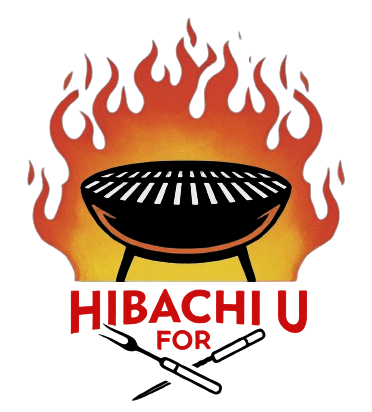Everything You Need to Know About Hibachi Grills
What is Hibachi?
Hibachi is a style of Japanese grilling, which is widely appreciated by those who enjoy Japanese cuisine. However, outside of Japan, the term “hibachi” is often misunderstood. Typically, it refers to a small charcoal stove or an iron griddle used for cooking. In Japan, hibachi specifically refers to a shichirin (charcoal stove) or a teppan (iron griddle). In the United States, hibachi restaurants are generally associated with teppanyaki grills where chefs prepare meals right in front of diners. If you’re looking to recreate the hibachi experience at home, you can try hibachi at home or opt for mobile hibachi catering to enjoy a slightly different meal.
The History of Hibachi
The word hibachi (火鉢) translates to “fire bowl” in Japanese. Initially, it was simply a container used for heating rooms and boiling water. These pots were commonly used in Japan during the Heian period and were made from materials like ceramic, metal, or wood. However, by the late 1800s, hibachi evolved into a grilling method for food. This transformation gave rise to the hibachi cooking style we recognize today. You can try this style at home with a backyard hibachi setup or hire a private chef to prepare the meal for you.
Hibachi vs. Teppanyaki
Hibachi and teppanyaki are two distinct cooking methods. Teppanyaki involves grilling food on a flat iron griddle, with chefs preparing chicken, beef, shrimp, and vegetables directly in front of customers. Teppanyaki grills are commonly found in hibachi restaurants. On the other hand, hibachi utilizes a charcoal stove, which imparts a smokier flavor. It often involves grilling food with skewers. While teppanyaki depends on a flat cooking surface, hibachi is all about cooking over an open flame.
The Benefits of Using Binchotan Charcoal
If you’re cooking hibachi at home, consider using binchotan charcoal. This Japanese charcoal burns steadily for up to 5 hours, providing consistent and smokeless heat. If binchotan is difficult to find, you can easily substitute it with lump charcoal or briquettes. Both options will work for grilling, though they might not offer the same quality of heat as binchotan.
What Can You Cook on a Hibachi Grill?
Hibachi grills offer versatility in what you can cook. Popular choices include prawns, fish, vegetables, and even quail. Yakitori, or skewered chicken, is also a favorite. You can grill vegetables such as zucchini, mushrooms, and onions. Whether you’re hosting a hibachi party at home or hiring mobile hibachi catering for an event, the grill allows you to experiment with various flavors and ingredients.
Yum Yum Sauce: The Signature Hibachi Sauce
Yum yum sauce is often associated with hibachi meals. It is sometimes called shrimp sauce or white sauce. While it isn’t a traditional Japanese creation, yum yum sauce has become quite popular in North American hibachi restaurants. This creamy and tangy sauce pairs perfectly with fried rice, noodles, and grilled meats. Typically, it’s made with ingredients such as mayonnaise, butter, ketchup, rice vinegar, sugar, paprika, garlic powder, and onion powder. Additionally, yum yum sauce can also be used with other dishes, including sushi and potstickers.
Conclusion
In conclusion, whether you’re cooking with your own backyard hibachi, hosting a hibachi party at home, or hiring mobile hibachi catering for an event, hibachi grilling offers a fun way to enjoy delicious meals. By using the right ingredients, like binchotan charcoal, and incorporating a flavorful sauce like yum yum, you can recreate the hibachi experience at home or enhance your next event with hibachi catering services.

